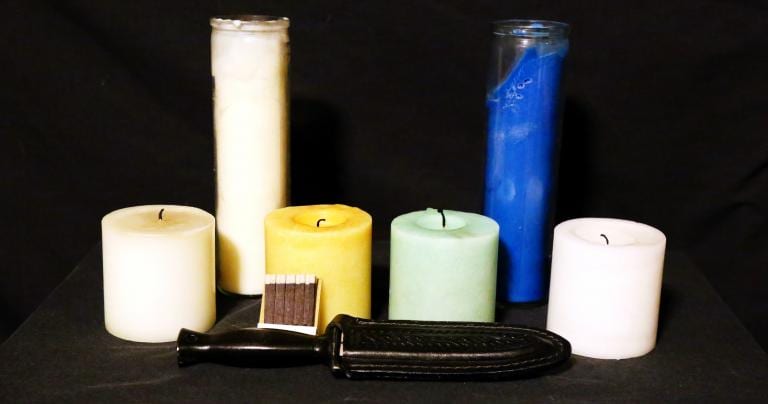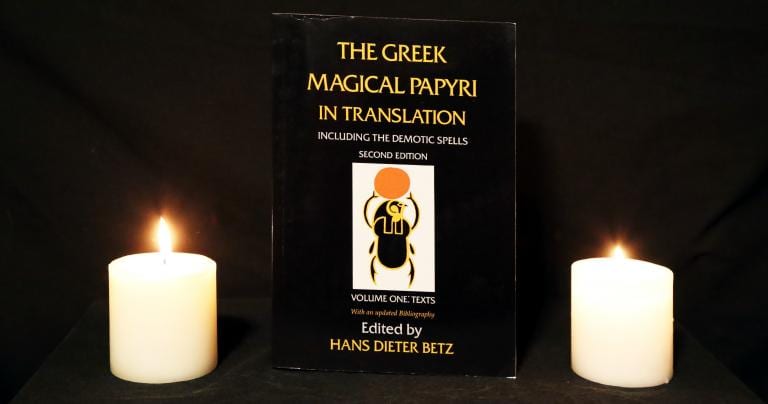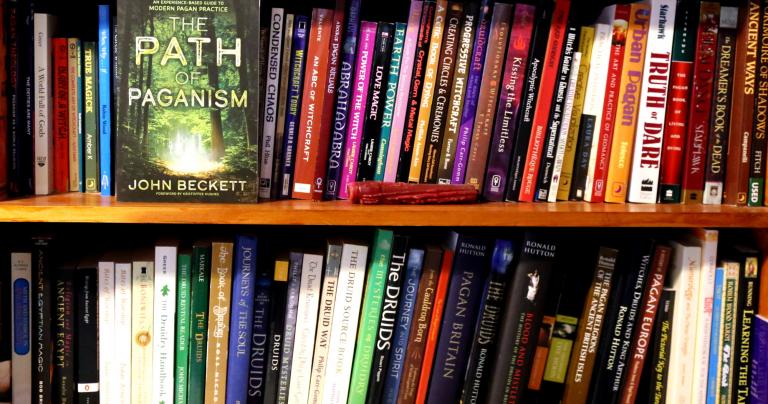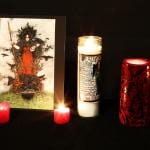By now I imagine most of you have seen the cynical and offensive article “I spent a week becoming a witch and the results were worrying” by Ceri Radford on the UK tabloid site the Independent. For the new year, Radford says:
I decided, for once, to seize the cultural zeitgeist. I picked up a copy of the newly published The Modern Witch’s Guide to Happiness by Luna Bailey and set my cynical self a New Year, New Me challenge.
The rest is seven days of superficial attempts to follow the recommendations in the book – just enough to generate 1300 words of condescending commentary.
Radford did one good thing in all this – she gave us a prime example of how to do Paganism wrong.
I know – Paganism and witchcraft aren’t the same thing… though at Radford’s level, I’m not sure the difference is significant. But I’m writing from my perspective as someone who identifies as a Pagan and not as a witch. If any of my witch friends have additions unique to witchcraft, please add them in the comments.
Here are nine ways to do Paganism wrong.

1. Become a Pagan because it’s trendy
Despite its shortcomings, I still prefer a Big Tent approach to Paganism. I want Paganism to be for everyone, not just for priests and mystics and powerfully scary witches. If you’re interested, come on in. If your inspiration for Paganism or witchcraft is a TV show or a computer game, so be it. If you insist on Hollywood magic you’ll always be disappointed, but if you’re willing to dig for the truth behind the fiction you can learn some amazing things.
All of this assumes there’s something of substance in your attraction: the power of witchcraft, the mystery of Nature, the majesty of the Gods. A bit of substance can inspire you to do what must be done, and it can keep you working for as long as it takes – which is far longer than a week.
But if you just want to be a Pagan or a witch because it’s what the cool kids are doing, save your time and your money. You’ll never accomplish anything of substance before you abandon it for the next trend.
2. Show zero respect for a tradition you know nothing about
Here’s the first thing you need to know about Paganism, witchcraft, or Heathenry: just like Buddhism, Islam, or Roman Catholicism, it’s a deeply meaningful part of some people’s lives. It’s part of their core identity. In 2018 Heron Michelle of the Witch on Fire blog wrote about Witchery as an Orientation and Sacred Mission.
To ridicule people’s identities and traditions based on a superficial attempt to follow them is at best rude and inconsiderate.
We are under no obligation to respect every tradition in the world – those that are harmful deserve our active opposition. Those that don’t concern us, don’t concern us. I readily criticize the Catholic church for their policies on reproductive rights, but their belief in transubstantiation is none of my business.
Treat other people’s religions and spiritualities as the sacred traditions they are.
3. Don’t look at your pre-conceived ideas about Paganism… or about life
Mark Twain probably didn’t say it, but it’s still true: It ain’t what you don’t know that gets you into trouble. It’s what you know for sure that just ain’t so. And it’s quite clear that Ms. Radford knows for sure that there’s nothing in the universe that isn’t matter or the interactions of matter.
But materialist assumptions are assumptions, not facts. Magical, religious, and Otherworldly experiences are undeniably real. We can debate what they mean, but to dismiss them because they don’t fit neatly into an atheistic worldview is just as wrong as assuming every little coincidence is magic.
4. Base your whole practice on the first book you read
I haven’t read The Modern Witch’s Guide to Happiness. Based on the reviews, I’m not likely to read it. It appears to be focused more on the aesthetic of witchcraft than on deep magic. So be it – that type of witchcraft is meaningful to some people, and a few of them may make their way to more serious practices.
But even if your first book is Thorn Mooney’s Traditional Wicca: A Seeker’s Guide or my own book The Path of Paganism, basing your whole practice on one book is a bad idea. None of us have all the answers, and the odds on any one of us being exactly what you need are pretty long. You don’t have to read the whole Llewellyn catalog (or Weiser’s, or Scarlet Imprint’s) before you start, but read a good variety of sources.
5. Don’t talk to any experienced practitioners
The largest growth in Paganism and witchcraft over the past 30 years has been from solitary practitioners. There’s certainly nothing wrong with learning by doing, using books for your teachers. But it’s so much easier if you can talk to people who are actually doing what you’re trying to learn.
Ceri Radford isn’t some teenager growing up with fundamentalist parents in the middle of Nebraska. She’s a columnist for a major on-line news site. There’s almost certainly someone near her who could serve as an advisor, and if not she’s got the whole internet at her disposal.
If she had any desire to actually become a witch and not just ridicule other people’s spirituality she might have taken advantage of that.
6. Ignore the instructions
Radford tried one spell from the book, but she chose a burning and banishing spell and then refused to actually burn it.
I like to say that if you want to believe in magic, just start working magic. Do the spells right and you’ll get results.
But you have to do the spells right.

7. Go through the motions
It’s one thing to “fake it till you make it.” Sometimes we’re not sure something will work, but we give it an honest try. Even if it doesn’t work exactly as we’d like, most times it brings some sort of positive outcome.
But there’s a huge difference between an honest try and going through the motions. If you’ve done much of anything in the realm of religion and spirituality you know what I’m talking about. Reciting rote prayers out of a sense of duty is one thing – mouthing the words while your mind is on something else is another. Trying a spell you’re not sure will work is one thing – throwing it all together with little attention is another.
8. Drop it all when you don’t get Earth-shattering results in a week
I know the modern attention span is short and getting shorter. But some things simply don’t operate at the speed of social media.
Someone should tell Ms. Radford that it’s traditional for witches to study for a year and a day… and then the work really starts.
From the time I decided to learn magic, it took weeks before I got anything resembling a result. From the time I got serious about my Pagan religion, it took five years before I had an ecstatic experience, and three more years before I had a second.
Of course, all this assumes the seeker is honestly seeking, and not just organizing a stunt for her newspaper.
9. Rationalize away the results you do get
When Radford got a meaningful, helpful, and insightful response from divination, she immediately dismissed it as confirmation bias. Now, confirmation bias is a real thing. But jumping to that conclusion is just as wrong as assuming Otherworldly sources for mundane experiences.
In 2018 and 2019 I led a series of workshops that focused on people telling their stories of Otherworldly experiences. It’s easy – too easy – for us to dismiss our individual stories. Together, we start to realize it’s not just us and that there’s something behind them.
The bottom line is this: if it works, use it.
For another take on Radford’s article, read Becoming A Witch In A Week? Not Even Close by Gwen of the 3 Pagans and a Cat blog.














